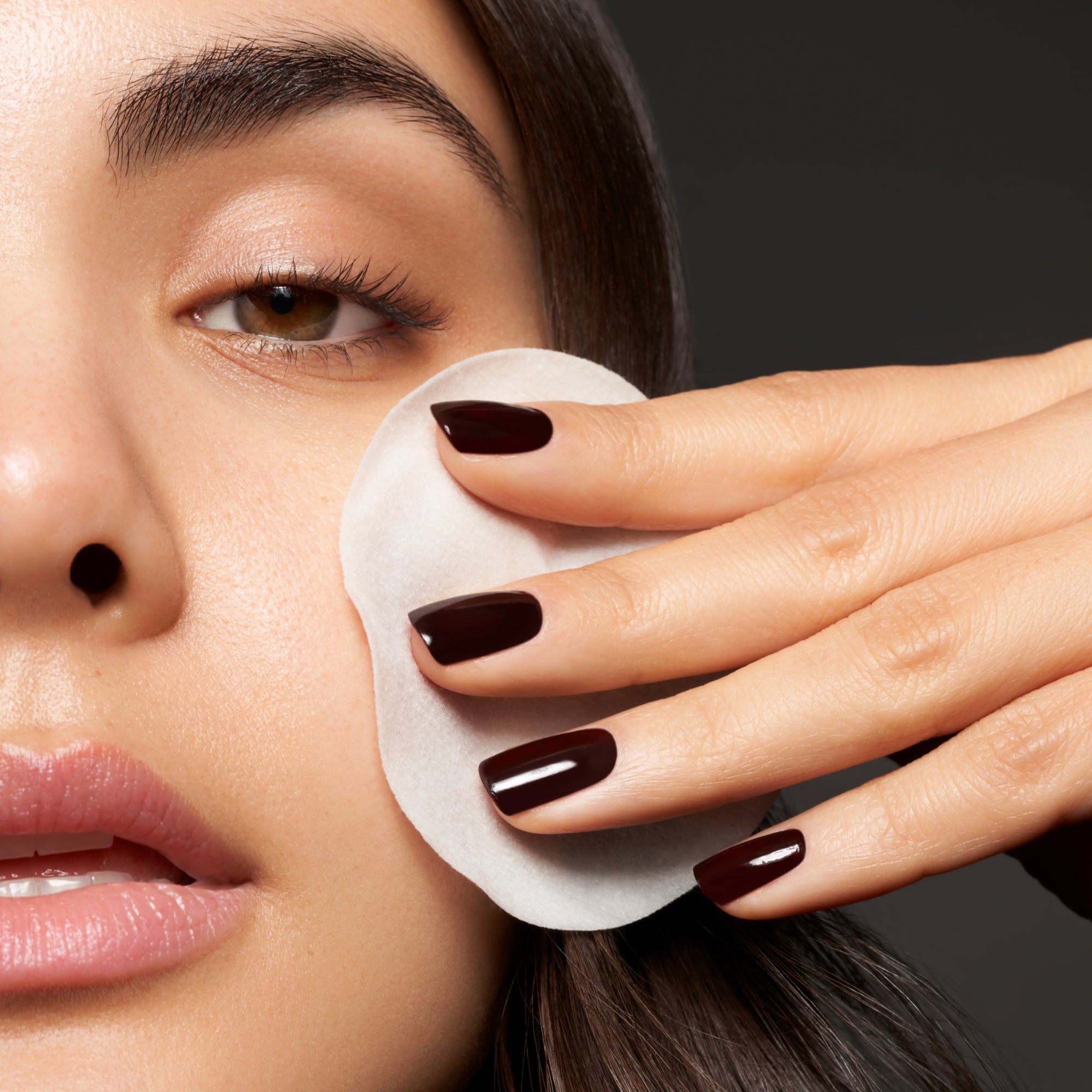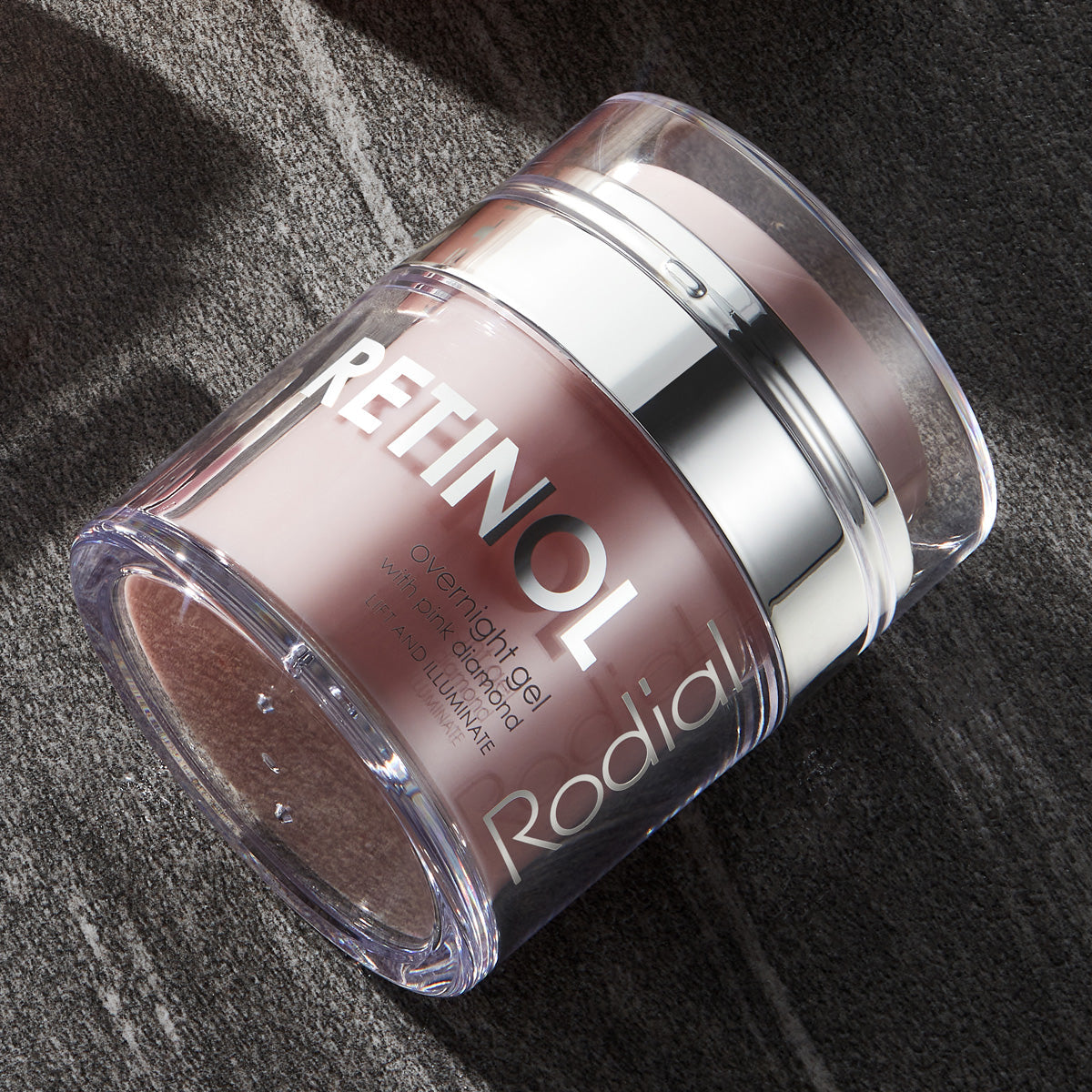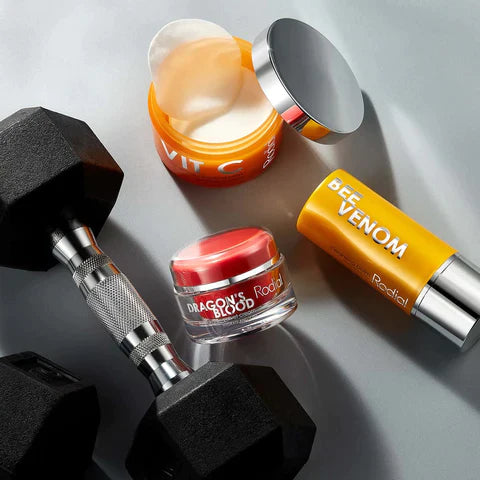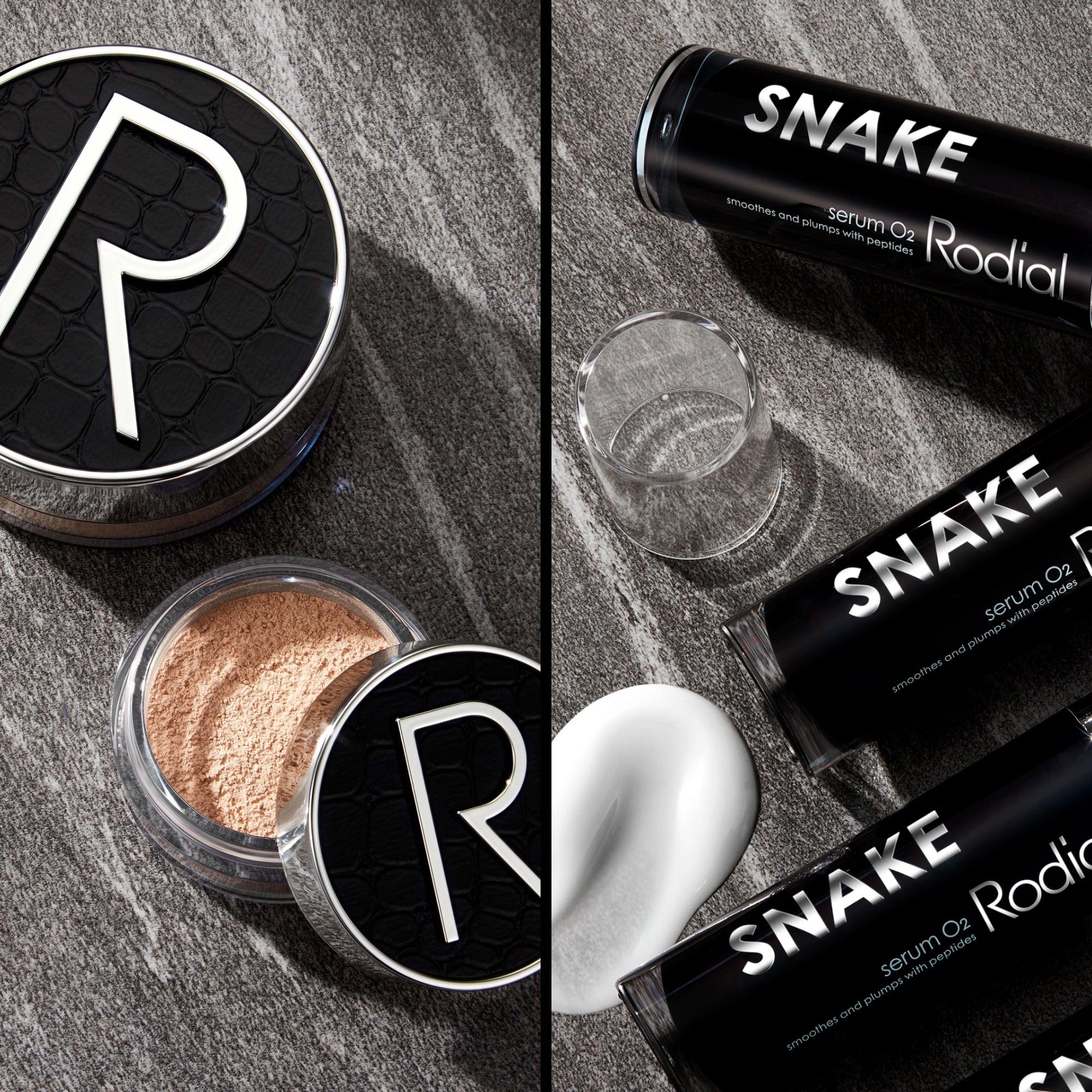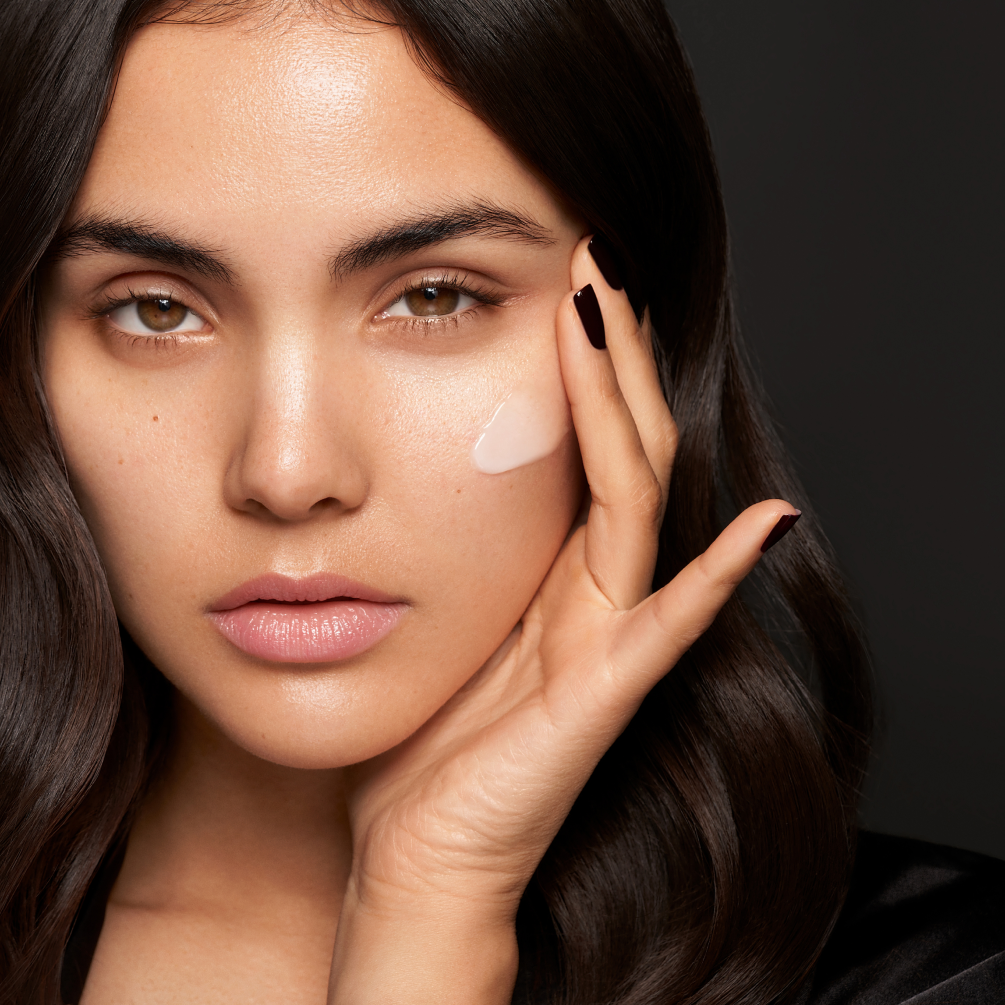If you’re a Rodial regular, you’ll know that we talk about glowing skin a lot. In fact, it’s a term used widely in skincare, but you may often ask yourself how you get that elusive glow. Well, there’s one key step in your skincare routine that’s a non-negotiable if you want glowing skin: exfoliation. Without it, our skin can become dull, rough and bumpy. Read on for how exfoliation can help your skin, how to do it and our recommended exfoliation products.
What do exfoliators do?
Exfoliators either physically slough away the layer of dead skin cells at the skin’s surface, or chemically break them down. Our skin cells in the outer layer of skin renew almost daily, which means that the old ones die off and need to be removed. If they aren’t removed, it can cause dullness – essentially, the dead skin obstructs the new, fresh skin. Allowing dead skin to build up can also eventually block pores, which can lead to breakouts.
Exfoliating also helps to encourage skin to produce more collagen, which is the substance responsible for keeping our skin youthful and plump. It does this by encouraging skin cell renewal – younger, fresher cells keep that production line of collagen going, which is particularly important as we get older because collagen production starts to decline. Exfoliation also helps with skin hydration: removing the dead skin allows the fresh, new skin to drink in hydrating ingredients.
The difference between physical and chemical exfoliators
There are two ways you can exfoliate your skin – either physically or chemically. Physical exfoliators come in the form of scrubs and generally have particles in them that give them grainy, abrasive texture, which physically sloughs and buffs away the dead skin.
Physical exfoliators also exist as exfoliating cloths, brushes or gloves: again, these have an abrasive texture to them that physically buffs away dead skin. Generally, physical exfoliators are better for those who don’t experience any sensitivity to products or ingredient, or who have a particularly rough, bumpy skin.
Chemical exfoliators work by breaking down dead skin via acids such alpha hydroxy acid (AHA) and beta hydroxy acid (BHA) – two of the most common type of chemical exfoliator. AHAs like glycolic and lactic acid work at the skin’s surface to break down the dead skin build-up and resurface the complexion for a brighter appearance, while BHAs like salicylic acid are oil soluble, so are able to penetrate your skin’s oil barrier to get inside pores and break down oil and dirt. BHAs are particularly effective at treating breakouts and types of acne.
Chemical exfoliants are also gentler on the skin compared to physical exfoliators. If you have sensitive skin, it’s a good idea to seek a product with a low percentage AHA or BHA, or an exfoliating pad, as these will generally have lower levels in them. For very dry skin, avoid physical exfoliators and also seek a low percentage AHA or BHA.
Which exfoliator should I use?
Before you start exfoliating, you need to identify your skin type. Physical exfoliants are generally not suited to sensitive or dry skin types: you should instead seek a gentler exfoliation option like low-level AHA or BHA cleanser or pad. Dermatologists generally recommend chemical exfoliation over physical exfoliation due to the abrasive nature of some physical exfoliants which, if not used correctly, can damage your skin. However, there is definitely a place for physical exfoliation: the skin on our bodies is not as delicate as that on our face and neck, so a good scrub or body brush can be an excellent way to slough away that dead skin.
How often should I exfoliate?
If you’ve never exfoliated before, it’s a good idea to start low and slow: in the case of chemical exfoliants, that’s low percentage products once or twice a week to begin with. You can then up your usage to around three times a week once your skin has adjusted. Low-level chemical exfoliants can be used daily – but always check the usage instructions and go easy if your skin is sensitive. For physical exfoliants, start by using them once a week, and in the shower where possible – the steam from the shower helps to open pores and soften skin, prepping it perfectly for exfoliation.
Is it better to exfoliate skin when wet or dry?
Physical exfoliants work best when skin is softened and pores opened, so using your scrub or brush in the shower is the recommended way to physically exfoliate. Chemical exfoliants are generally found in cleansers, pads, tonics and serums, so should be used on moist or damp skin (cleansers) and dry skin for all other product types.
Should I exfoliate morning or night?
Skin generally renews and repairs itself overnight, so the morning can be the prime time to exfoliate. However, chemical exfoliators like AHAs and BHAs can make skin extra sensitive to UV light, so most chemical exfoliants are recommended for evening use only. Physical exfoliators like scrubs can be used in the shower either morning or evening.
Advantages and disadvantages of exfoliating
Exfoliating has so many advantages for our skin. It allows newer, fresher skin to absorb other ingredients we use, like hydration products, and also smooths skin, which allows for any make-up used to smooth over skin much more easily and last much longer. Exfoliating also boosts our collagen production, which is a crucial part of any anti-ageing routine, as collagen production slows as we age.
There aren’t many disadvantages to exfoliating, other than over-usage or using the wrong product. Always identify your skin type first (a dermatologist can help with this) to ensure you use the right product for your skin and start low and slow with any product. If you start to notice signs of over-exfoliation or a reaction to a product – redness, dryness, tightness, or stinging – stop using the product straight away and use products to hydrate and replenish skin.
The Rodial exfoliators
For everyday use
Rodial Vit C Brightening Cleansing Pads
One of our bestsellers. These pads are soaked in a formula that contains AHAs glycolic and lactic acids, that work synergistically with hero ingredient vitamin C to resurface skin and brighten the complexion. Can be used daily in the AM and/or PM after cleansing. Also available in a mini size.

The low-level cleanser
Vit C Brightening Cleanser
An everyday gel-based cleanser with a similar formula to the Brightening Pads: glycolic and lactic acids work to break down dead skin and resurface the complexion while vitamin C brightens. A great choice for mild everyday exfoliation. Also available in a mini size.

For oily types
Salicylic Acid Cleanser
Powered by BHA salicylic acid, this cleanser penetrates pores to break down oil and dead skin. Also contains niacinamide for oil control and skin barrier support and diamond powder to smooth skin. Can be used daily AM and PM. Also available in a mini size.

The physical exfoliator
Vit C Papaya Enzyme Scrub
A antioxidant-powered scrub with perlite and jojoba beads to slough away dead skin, plus resurfacing actives to smooth the complexion. A great 2-3 times a week treatment.

For dry skin
Bee Venom Cleansing Balm
This nourishing balm-to-milk cleanser contains BHA salicylic acid to break down dead skin and impurities within pores, while vitamin C brightens and bee venom firms. A great PM cleanse to remove makeup and a favourite of mature skin types. Also available in a mini size.

For an intense treatment
Vit C & Retinol Pads 5-Day Peel Kit
Use the Vit C Brightening Cleansing Pads in the morning for an all-day glow and the Retinol Resurfacing Pads at night help skin regenerate and renew overnight with cell turnover-boosting retinol. Ideal for a complete dull skin overhaul. Also available in a mini size.

What is Retinol and Why Should I Start Using It?
Rodial's skincare experts answer your retinol questions including what is retinol? When should I start using it? and how to use it for best results!
The Ultimate Guide To Skin Cycling
How to get blurred skin?
Discover how to achieve smooth, flawless skin in 5 minutes and 5 products
